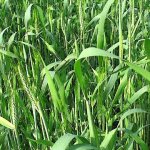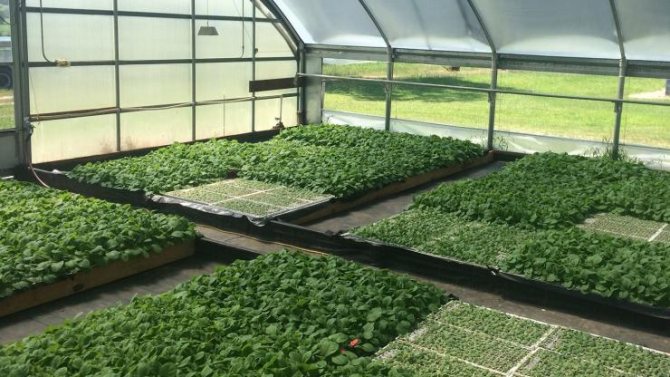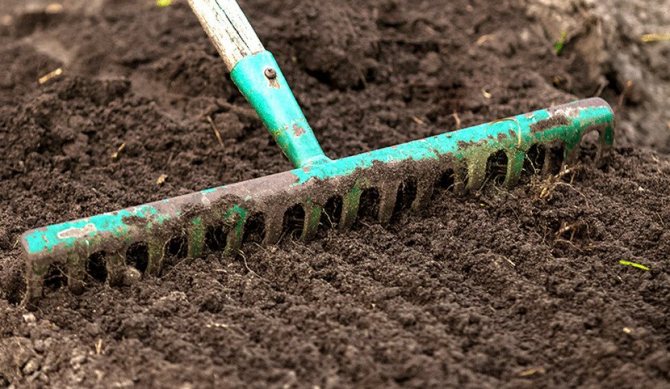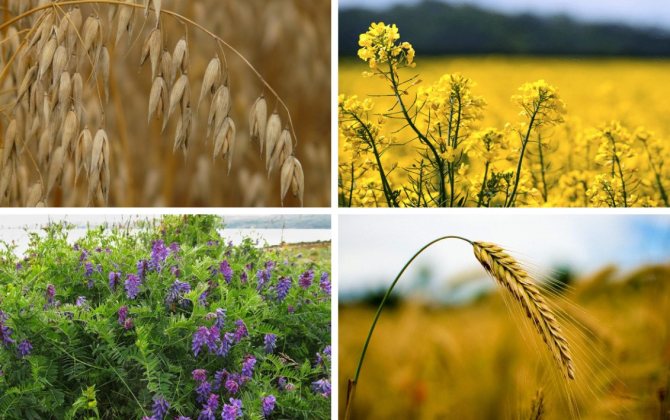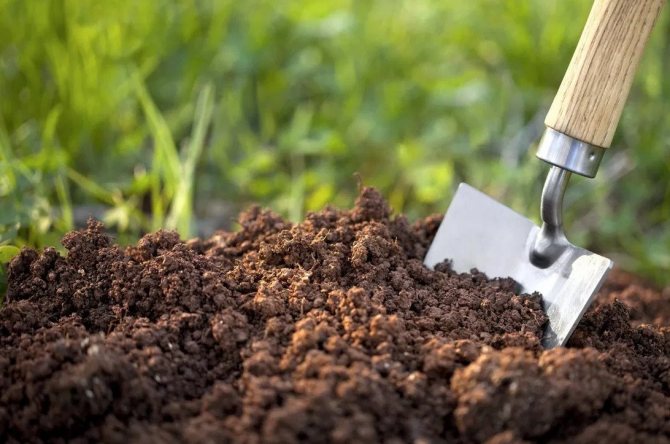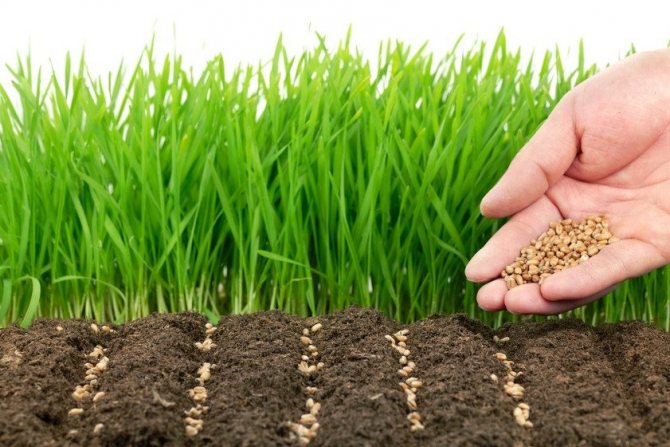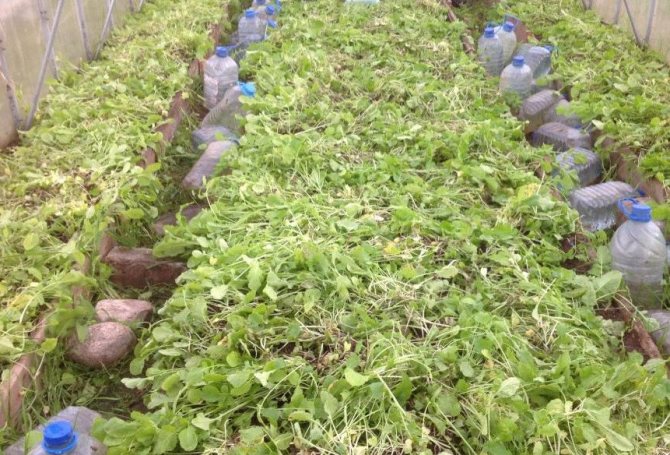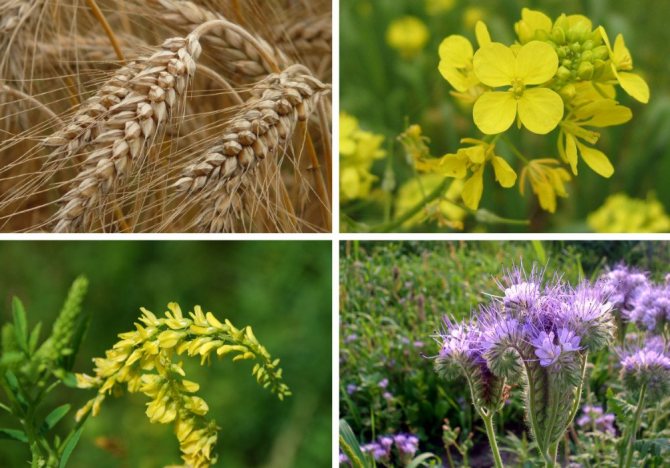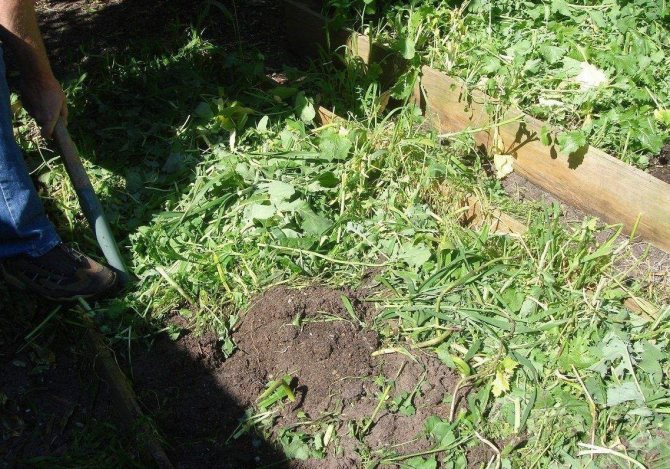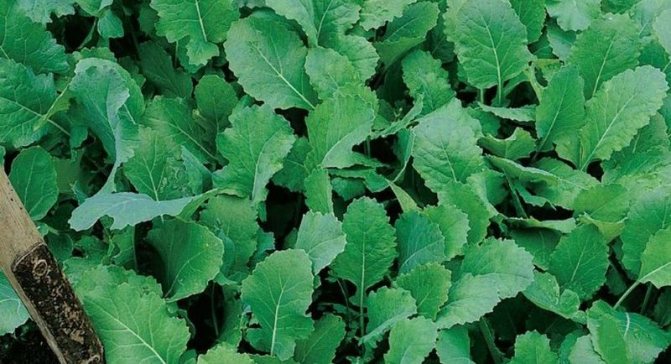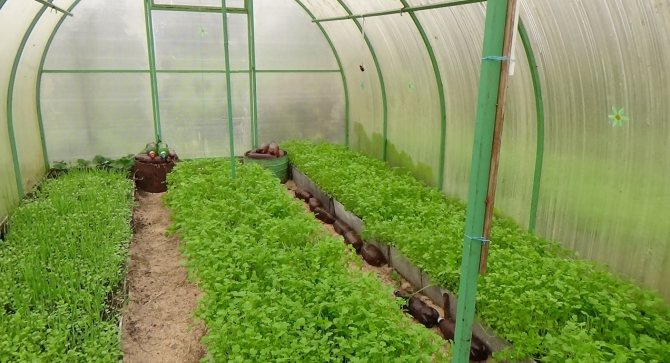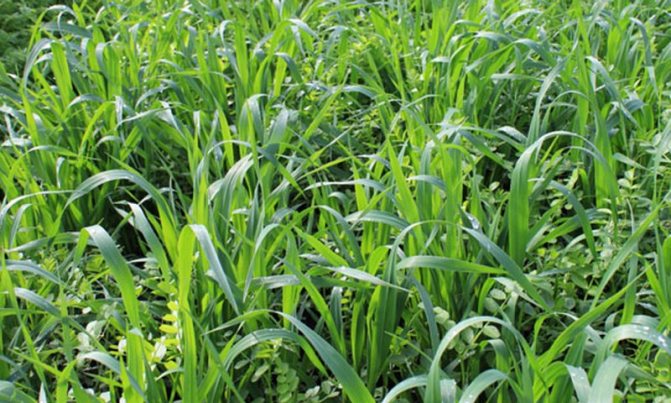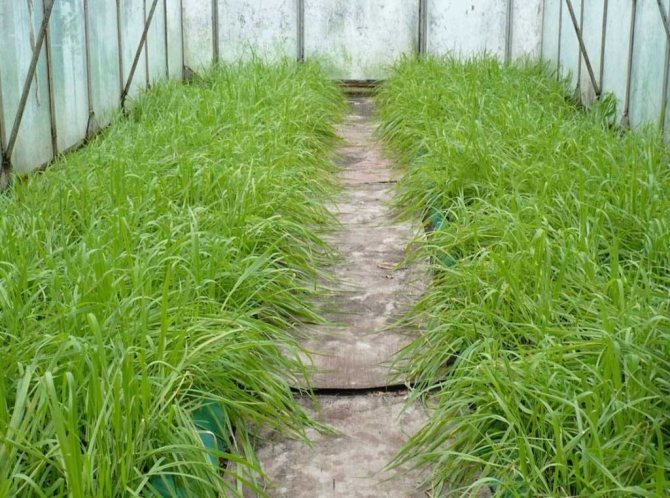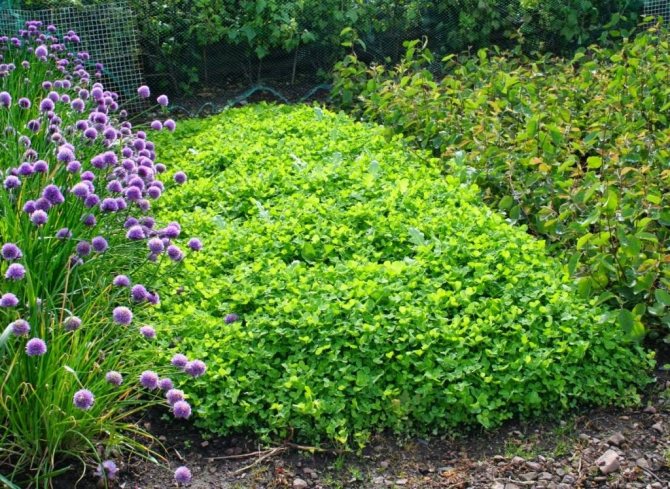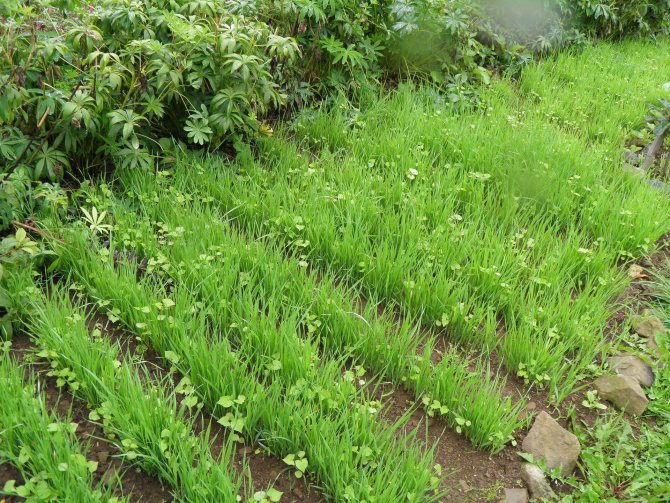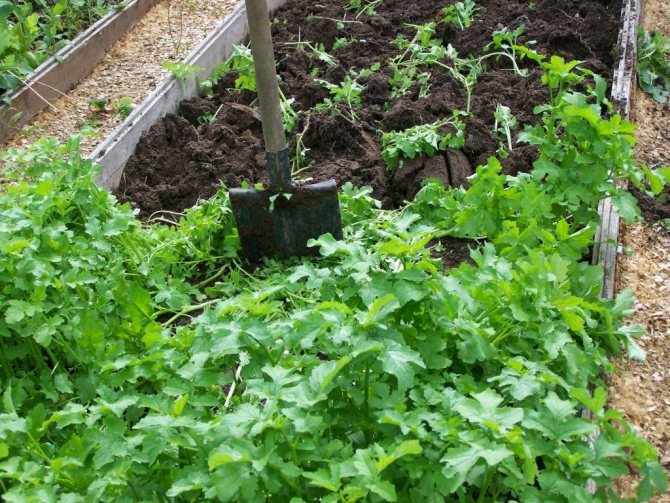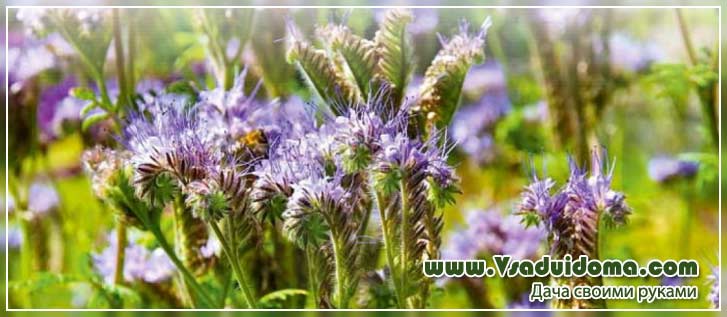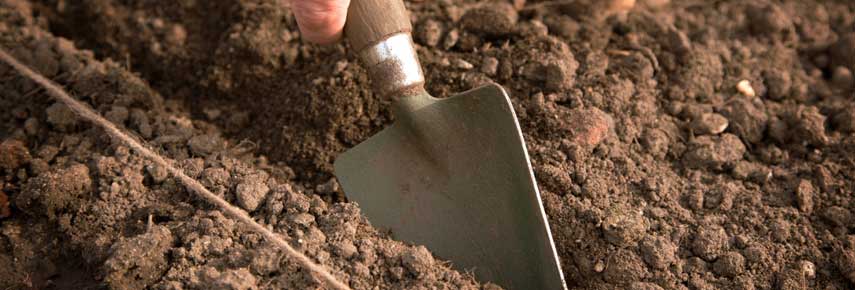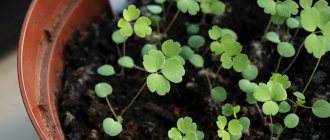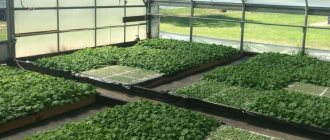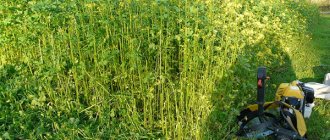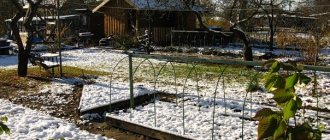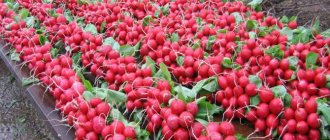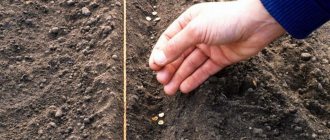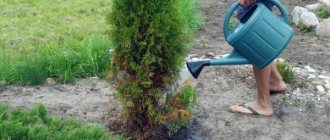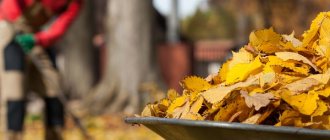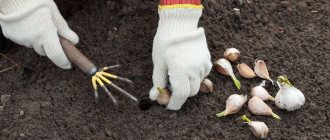Green manure plants are a type of natural and environmentally friendly fertilizer that many gardeners use. At a certain moment, many summer residents are faced with the question of what green manure to sow in autumn and spring in order to improve the quality of the soil in the garden plot. Of course, nature has created a large number of green manure, each of which has one or another beneficial effect on the soil and plants (which also will not interfere with growth stimulants) growing on it. In order to get a good harvest, it is important to study the characteristic features of your land plot, its soil and, on the basis of this, make a choice of green manure for sowing.
What is the value of green manure
- saturation of the soil with nutrients
- restoration of soil organic matter, humus layer
- decrease in the number of pathogens and pests
- weed growth retardation
- preservation of moisture in the soil and loosening
- snow retention and prevention of soil weathering
- protection against return frost in spring

Phacelia sown before winter
When is the sowing carried out?
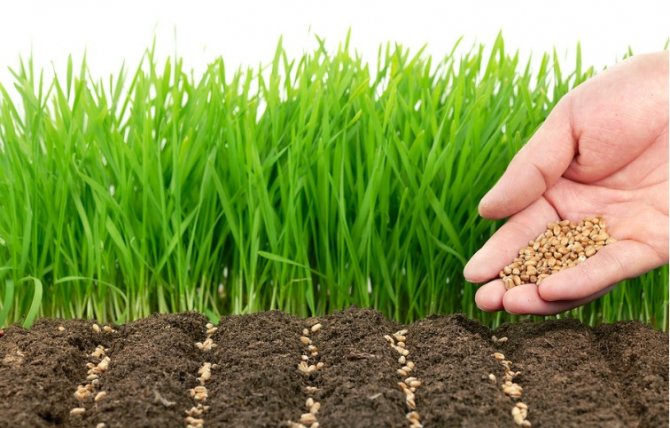

When to plant green manure in autumn depends on the particular crop chosen as a green fertilizer, as well as on the climatic conditions of the area. Sowing is usually carried out from late summer until mid-autumn. In the northern regions, planting is performed earlier - in August, in the southern regions, the dates can be postponed to early September.
Important! You can sow green manure twice before winter. This is possible if early varieties of vegetables are planted on the site, the collection of which ends by mid-August or earlier. In this case, early ripening species are sown first.
When the stems reach a height of 0.2-0.25 m, the plants are mowed and embedded in the ground. Before the cold weather begins, the organic mass will have time to decompose and enrich the soil with minerals.
In the second half of September or at the beginning of October, a second portion of green manures (winter crops) such as rye, vetch, sweet clover is planted, which will take root and form a small green mass before frost, and will actively continue their development in the spring.
Which siderates are better
In fact, there are no ideal siderates - different plantings need their own plants. To explain this is simple - siderates belong to different families of plants and have their own characteristics, for example, to clear the area of keels, after the cabbage, you cannot plant other cruciferous vegetables: radishes, turnips, as well as white mustard or oil radish.
In addition, different plants have different germination times, growing cycles and soil requirements.
For example, from legumes, peas grow better on light sandy loam soil, poorly on heavy soil. It is more advisable to plant beans and beans on loam.
Siderata by family
- legumes: lupine, beans, soybeans, lentils, sowing and field peas, alfalfa, sweet clover, spring and winter vetch, clover, fodder beans, sainfoin, soybeans, seradella, peas, chickpeas, clover.
- cruciferous: rapeseed, colza, oil radish, white mustard
- cereals: wheat, rye, barley, oats
- buckwheat: buckwheat
- Compositae: sunflower
- hydrophilic (hydrophilic): phacelia
In addition, the siderates of various families have different functionality:
- legumes specialize in fixing nitrogen from the air
- cruciferous and cereals fix nitrogen from the soil, convert other minerals into a more accessible form, prevent soil demineralization
- increase the humus layer with a large leaf mass as a green fertilizer - rapeseed, rape
- lupine, phacelia, buckwheat, oats, alfalfa - can reduce soil acidity
- legumes, annual ryegrass, phacelia, sunflower, white mustard, oil radish, calendula, nasturtium - can suppress nematodes and a number of pathogens
- all siderates loosen the soil with their roots, especially lupine, beans, oil radish
- almost all green manure suppresses weed growth due to seeding density or rapid growth
- annual ryegrass, phacelia, sunflower, mustard - also excellent honey plants
When to sow vegetables before winter
With podzimny crops it is better to be late than to hurry. If you hurry, the seeds of cold-resistant vegetables can sprout, which will inevitably die from frost. And the harvest, of course, will not be seen after that. Therefore, they start sowing when stable cold weather sets in, and the ground freezes (this is called “sowing over a shard”).


If the forecast promises unstable weather: cold weather alternates with thaws, it is better to postpone sowing. Do not be afraid that snow will fall, and you will not have time to sow the stored seeds; the snow cover can be gently swept away from the prepared bed - it will not harm the seeds, unlike heat and moisture.
Green manure and vegetable compatibility
- Solanaceous plants: potatoes, tomatoes, eggplant, bell peppers, and melons: cucumbers, zucchini, pumpkins, squash - grow well after such siderates as rye, oats, lupine, oil radish, mustard, sweet clover, vetch-oat mixture, rapeseed, phacelia, ryegrass annual.
- The best precursors for beets are mustard, rape, oil radish, vetch, cereals. Poor green manure predecessors: corn and legumes (vetch, alfalfa, lupine, sweet clover, clover, etc.) and rapeseed because of the danger of nematode infestation.
- For carrots - all crops are good, but the best are oil radish, mustard, rapeseed, rape.
- Siderata for cabbage, daikon, radish, turnip: sweet clover, vetch, lupine, phacelia, buckwheat, oats, clover, peas, as well as cereals.
- Onions can be planted in beds where buckwheat, lupine, vetch and vetch-oat mixture, barley, phacelia acted as siderates, but in general, any siderates, except for corn and sunflower, can be precursors for garlic onions.
- But garlic is more capricious - for it the best siderates are phacelia and mustard. It is undesirable to plant garlic after any legume siderates
- Before planting legumes (peas, beans), you can sow mustard, oil radish, rapeseed, rape, not other legumes.
- The best siderates for strawberries: lupine, mustard, phacelia, oats.
What green manure to sow in autumn
If you have already decided which vegetables, on which plot, garden bed or greenhouse will be planted for the next season, the main crop is harvested, you need to urgently plant siderates.
But not every green manure is suitable for autumn sowing. All have their own characteristics - there are spring crops, there are winter crops.
- Spring crops: oats, oil radish, rapeseed, white mustard, phacelia, which do not hibernate, their roots and aerial parts die off, but they do not completely rot during the winter. In the spring, you need to cut the roots with a flat cutter at a depth of 5–7 cm from the soil surface and mix slightly with the ground. You can spill the soil with a solution of Baikal EM-1 to accelerate the decomposition of the green mass.
- Winter siderates: rye, vetch, rapeseed - they are sown in late autumn before frosts, so that the seeds germinate in spring, and early in autumn, at the end of summer, then a small overgrown tops leave before winter.
Siderata before winter
Many spring green manures can be sown before winter. So, phacelia is usually sown in spring, but it is possible to sow it in October-November, after late-ripening crops - carrots, beets, late potatoes, when the site is not threatened by a large invasion of germinating weeds. The sowing time is calculated so that the seeds do not have time to germinate, and the number of phacelia seeds is increased by 1.5-2 times, since some of them may not sprout - at a rate of 10 g / m2, we take 20 g.
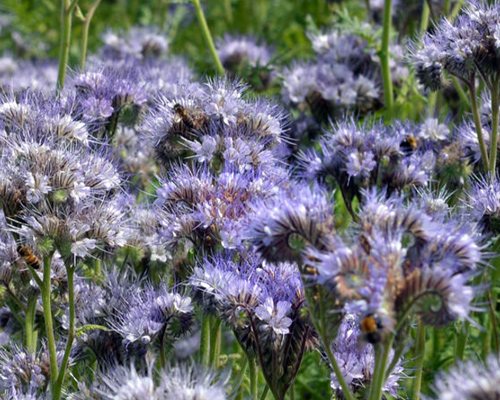

Phacelia tansy is suitable as a precursor to any vegetables and berries
The same applies to sowing mustard before winter, before frosts, it will also rise in the spring and begin work on thawing ground, but you need to sow much denser than in spring.
The advantages of winter green manures are that the plants will sprout earlier in the spring, and before the vegetables are planted, they will have time to grow decently. We make holes for phacelia or mustard seedlings, for example, for tomatoes. Tomatoes grow like this until early June, while there is a threat of frost - the herbs protect the seedlings from the cold. Then the aerial part of the phacelia or mustard is mowed (it can be easily removed), the roots remain in the ground, the greens are not sealed, but remains as mulch for vegetables.
A few tips for novice gardeners
The most important thing that the gardener should take into account when sowing biological fertilizer: these plants should not give seeds and sow in the garden. Otherwise, a banal weed will form in the greenhouse, which by all means will interfere with the growth of cultivated plants and instead of benefit, there will be a huge amount of trouble for the subsequent removal of a useful plant from the greenhouse. Therefore, it is important to mow the green manure on time. This is usually done at a time when the grass reaches 30–40 cm and does not begin to bloom. This is the best option, since green plants will rot and saturate the soil with additional nutrients.
You cannot use the same green manure throughout the season and for any plant. What is a good precursor for tomatoes will not work in a greenhouse where cabbage or peas are grown.
With timely planting in spring, siderates will be able to protect fragile seedlings from the first bright sunlight.
Each type of green manure has its own characteristics of planting, which should be taken into account:
- legumes do not like acidic soil;
- dyeing woad perfectly tolerates any temperature extremes and perfectly tolerates a lack of moisture;
- vetch is a demanding fertilizer, which is best planted interspersed with cereals, since vetch needs support for the climbing stem;
- white mustard will scare away the bear, it perfectly fights late blight, which is so dangerous for most cultivated plants.
If we take into account all these nuances and prevent biological assistants from multiplying, then the soil in the greenhouse will not be able to turn into mineralized soil and the yield of cultivated plants will always be at a high level.
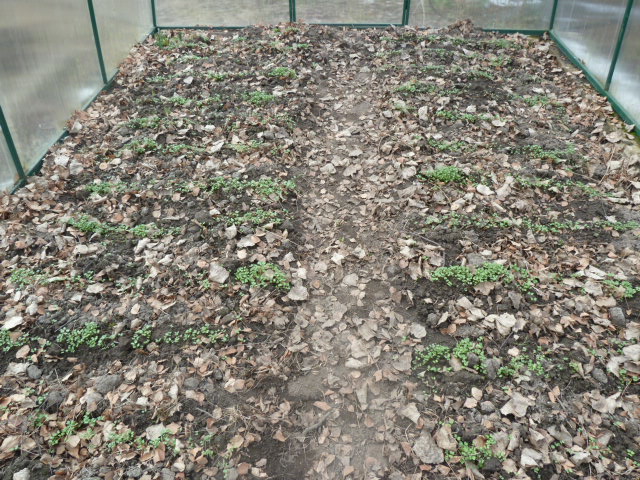

Sowing dates for green manure in autumn
The choice of green manure for sowing from the second half of summer depends on how much time remains before cold weather and frost and how thermophilic green manure is.
In the fall or at the end of summer, it makes sense to sow only those spring green manures that will have time to grow at least 15-20 cm, and cover the ground with a solid carpet, protecting it from erosion by rains, preventing loss of valuable substances and soil erosion.
In general, spring green manures can be sown until the end of August, in the southern regions - until the beginning of September.
You need to understand that the greening of farm fields and a small summer cottage pursue completely different goals. Large fields are sown with almost any kind of crops, including two-year ones, and only when grown in full cycle, they give the maximum enrichment of the land with nitrogen, phosphorus, potassium and other minerals. At the same time, most siderates have a powerfully developed root system, for example, in lupine it is about 1.5 m deep, others grow more than a meter in height. Such green manure is of value not as a green fertilizer (stems and leaves are too coarse to embed in the soil), but as an improvement in the structure of the soil (loosening and enrichment with nitrogen), as a fodder plant or a valuable honey plant. They are cleaned using powerful technology.
In ordinary garden plots, the main goal of growing green manure is to obtain green fertilizer, populate the vacated beds to protect against weeds, loosen the top layer of the earth, and protect the soil from diseases and pests. At the same time, it is very important to choose a green manure that grows quickly and is easily removed with a garden tool.
Therefore, sowing any green manure does not imply flowering, you can sow any herbs, but as soon as the crops grow up to 15-20 cm, cut everything and embed it in the soil. As a rule, in terms of selection, the cost of seed and its availability play an important role.
Mustard white


White mustard - the earliest green manure
White mustard copes with these functions perfectly - it is sown in late summer, early autumn, in view of its rapid growth and tolerance to cold weather, it manages to build up greenery and prevents the loss of nitrogen and other nutrients from the soil. With frost, the plant dies, but it is not necessary to plow it into the ground. White mustard grows poorly on acidic and waterlogged soils.
Oil radish
Another early-maturing cruciferous green manure, great for sowing areas that have become free by August, for example, early potatoes. It grows on all types of soils, especially good for heavy soils - loosens and structures. The radish has a small consumption of seeds, it rises quickly (in 4-7 days) and builds up its green mass, it is cold-resistant enough - it has time to grow to frost if sown later. Basal rosette of 4-5 leaves in 2-3 weeks after germination, and flowering in 30-40 days. It is imperative to mow oil radish before flowering.
Although yields are greatest during pod formation, radishes are much larger than mustard and have coarser stems, so they are allowed to grow longer on farms and harvested using machinery. An ordinary gardener has a simple tool - therefore, after a month and a half, you need to mow.
Like green manure, oil radish is sown in rows, 15 cm between seeds. Seed consumption is about 2-3 g per 1 square meter. m.Seeds are planted to a depth of 2-4 cm.
Winter rye
Winter rye, sown in early autumn or late summer, is excellent as a green fertilizer; it will have time to germinate before frost and form lush bushes. She tolerates winter well and already in early spring, continues to grow leaf mass and roots. Two weeks before planting vegetables or berries, the overgrown green mass must be cut with a flat cutter and the rye must be buried in the soil.
Winter rye as a siderat has another advantage - it is undemanding to the soil and grows well on all types of soils, including very poor ones. The disadvantage is that it does not fix nitrogen in the soil, but it gives a lot of organic matter.
Sowing winter rye should not be too thick, since in spring it sprouts very amicably and too frequent shoots are more difficult to harvest. Can be sown in rows, with a distance of about 15 cm, embedding to a depth of 4 cm.
Rape
Rape is picky about the soil, but in order to improve the structure, it is advisable to use it on heavy soils - sod-podzolic, light and medium loamy and chernozems, although it also grows on sandy loam soils. Strongly not suitable for growing in wet areas.
Rapeseed as a siderat is sown in the second half of August, in the southern regions later - after the 20s - the fact is that the rapeseed culture is more tender - if sown ahead of time, the plants outgrow, begin to be affected by diseases, and overwinter badly. The optimal size of the bush, with which the rapeseed painlessly leaves before winter, the rape is about 20-25 cm high and a rosette of 6-8 leaves - it takes about 2 months.
More care is required for rapeseed - this culture does not tolerate a sharp change in weather, when after a sudden thaw (melting of snow) frost again sets in - an uneven flow of water causes root rot. The same problem occurs with excessive nitrogen fertilization.Therefore, if the winter has little snow, you will have to throw snow on the beds with winter rapeseed.
Rape is sown to a depth of 2-3 cm. Seedlings appear in 4-5 days.
In spring, with a favorable wintering season, rape continues to grow, turns green and blooms by mid-May. They begin to mow it, not when green pods appear, but earlier, two weeks before planting the main crop.
After rapeseed, you can plant seedlings of peppers, tomatoes, eggplants. The disadvantage of this green manure is not only sensitivity to root rot, but also the mass of diseases and pests that affect cruciferous plants.
Buckwheat
It is better to sow buckwheat as a green manure in the spring, since it takes 1-3 months for its development, but it can be sown at the end of summer, in the fall, six weeks before the first frost. It can be sown after potatoes, tomatoes, cucumbers. Shoots appear on the 9-10th day. Mow during flowering - first flowers about a month after germination. Blooming buckwheat retains delicate foliage and stems, rotting well. It grows on all types of soils, including poor ones, gives good organic matter, does not store nitrogen in the soil, but converts phosphorus into a form readily available for vegetables. The disadvantage is that it is difficult to get seeds, store buckwheat will not work (it is steamed or fried), green seeds are needed.
Vika
Vetch or mouse peas - legumes are used both for organic matter and for saturating the soil with nitrogen, as well as suppressing weeds in difficult areas. Vika is more capricious - it grows only in slightly acidic areas, does not tolerate dryness.
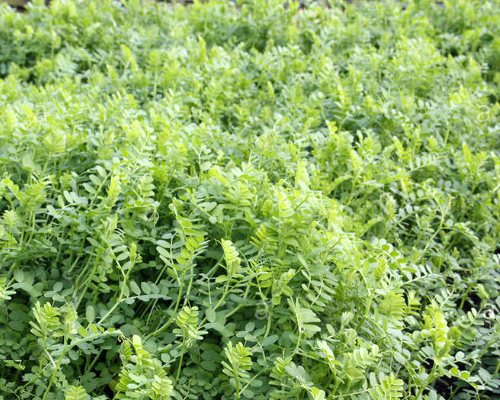

Vika (sowing peas) - it's time to mow
Vika is an early ripening plant, it grows well leaf mass, protects vegetables from snails and slugs. It can be planted under any vegetables, including under cabbage, when it is unacceptable to sow cruciferous siderates, but it cannot be planted in front of legumes (peas, beans).
Vetch is often included in green manure mixtures with rye, rapeseed, ryegrass and other herbs. The seeding depth is 1-3 cm. It is possible to mow and embed in the soil within 60-65 days after sowing.
Rye
Main advantages:
- the roots secrete substances that reduce the number of nematodes, microscopic worms parasitizing on the roots of plants;
- destroy harmful bacteria and microorganisms;
- loosens the soil;
- frost-resistant;
- will make any soil suitable for planting a main crop.
Rye is most productive for planting before winter. It is preferable to sow winter varieties. The plant manages to form a good root system and stems 15-20 cm long, which are then re-heated over the winter, saturating the soil with nitrogen, potassium and phosphorus. Makes the soil loose and breathable.
Rye begins to sprout early in the spring. The overgrown greens are dug up and the main crops are planted.
Recent Entries
6 ways to water home flowers without going up to them Ingenious tricks for growing tomato seedlings from experienced summer residents 6 ideas on how to use cut branches in the country and at home

